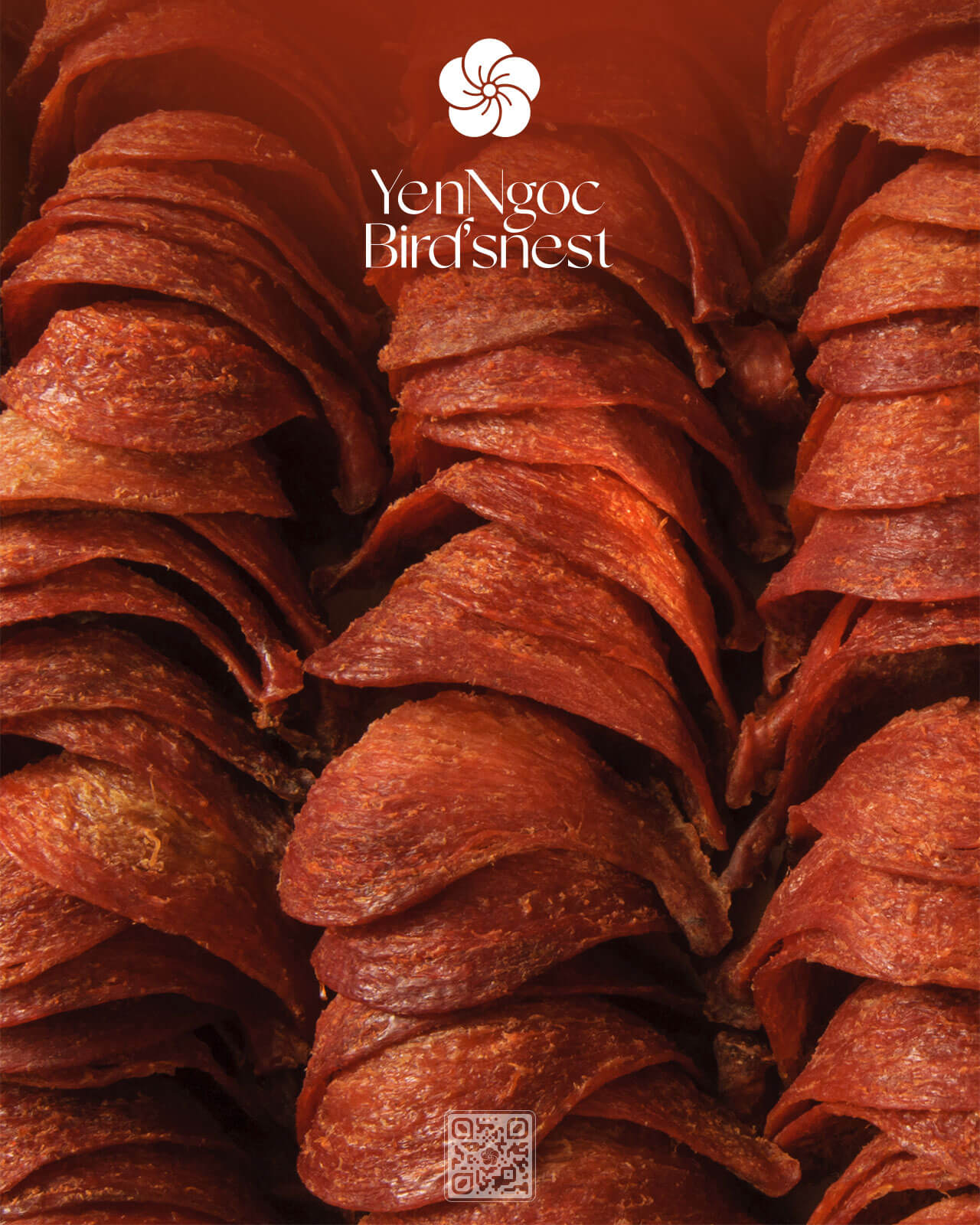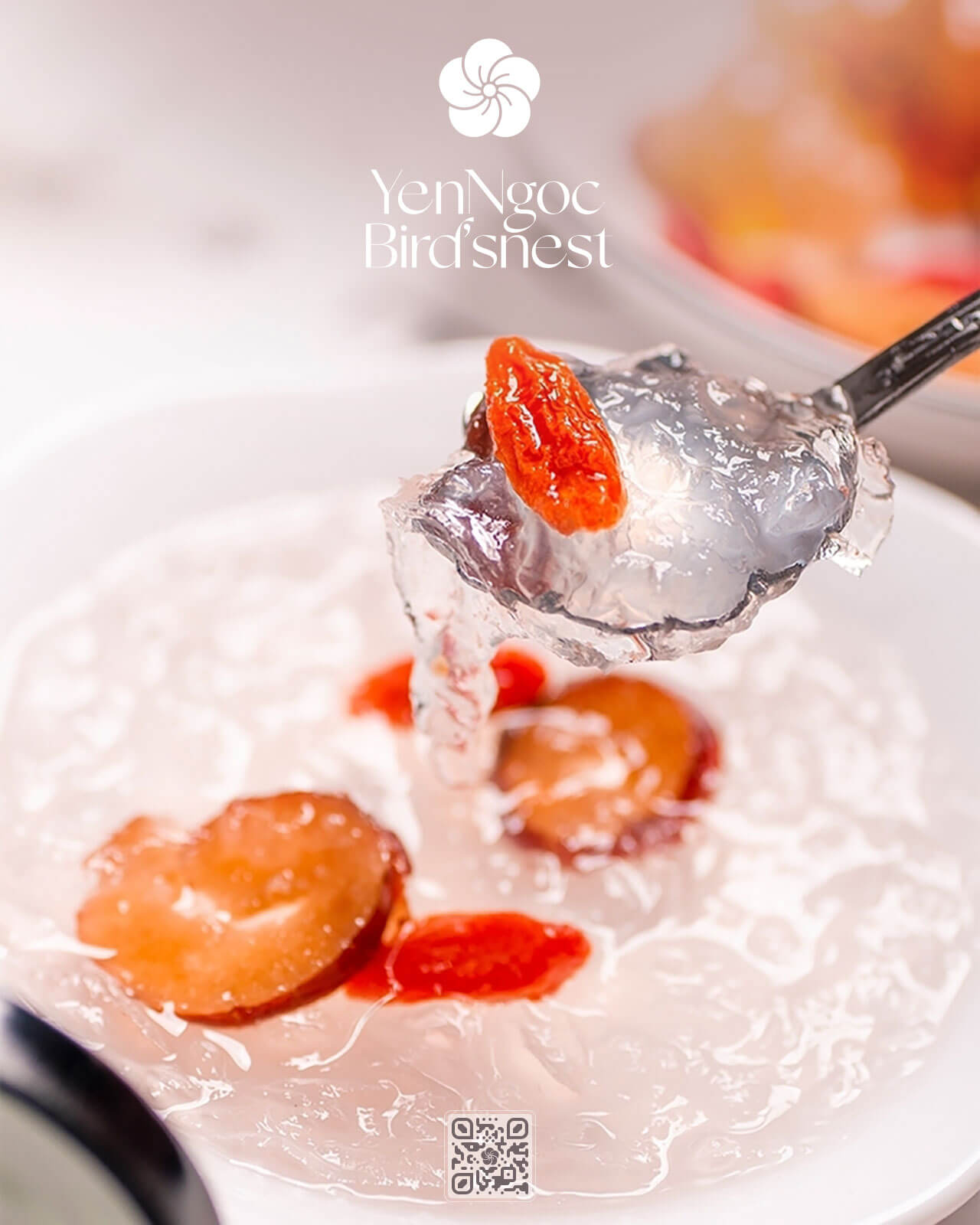Many people mistakenly believe that the red color of Blood Bird’s Nest is literally blood from the swiftlet. However, it is actually the red color of Iron (III) Hydroxide compound (Fe(OH)₃).
Fe(OH)₃ is formed through a series of chemical reactions:
NH₃ + O₂ ⟶ NO₂+ H₂O (Due to bacterial metabolism)
NO₂ + O₂ + H₂O ⟶ HNO₃
Fe²⁺ + HNO₃ ⟶ Fe(NO₃)₃ + NO + H₂O
H₂O + NH₃ + Fe(NO₃)₃ ⟶ NH₄NO₃ + Fe(OH)₃
All of these substances are naturally present in the living environment of swiftlets. Water (H₂O) comes from atmospheric moisture, Ammonia (NH₃) from swiftlet droppings, and iron element Fe²⁺ from the swiftlet nests themselves (constituting 20% to 30%)…
Whether it’s from island or house, the red color is still the result of chemical equations forming the compound Fe(OH)₃. The speed of this reaction depends on the catalysts in the surrounding environment. For house swiftlets, fermenting the droppings is a method to accelerate the chemical reaction, aiming to increase Nitrite (NO₂-) levels to react and form iron salt Fe(NO₃)₃ and then Fe(OH)₃.
This is why bird’s nests often have very high levels of Nitrate (NO₃-) and Nitrite (NO₂-) compounds. These are two substances with carcinogenic potential, limited by the World Health Organization (WHO) and the European Economic Community (EEC) in food to very low levels to ensure safety.
In summary, the safety and nutritional value of bird’s nests need to be reconsidered, not as exaggerated by other businesses.
For island swiftlets in well-ventilated environments with low NO₂ gas levels, they may still be acceptable. The value lies in their beautiful color and their scarcity. Customers need to have a proper understanding of this product when using bird’s nests as health supplements.







